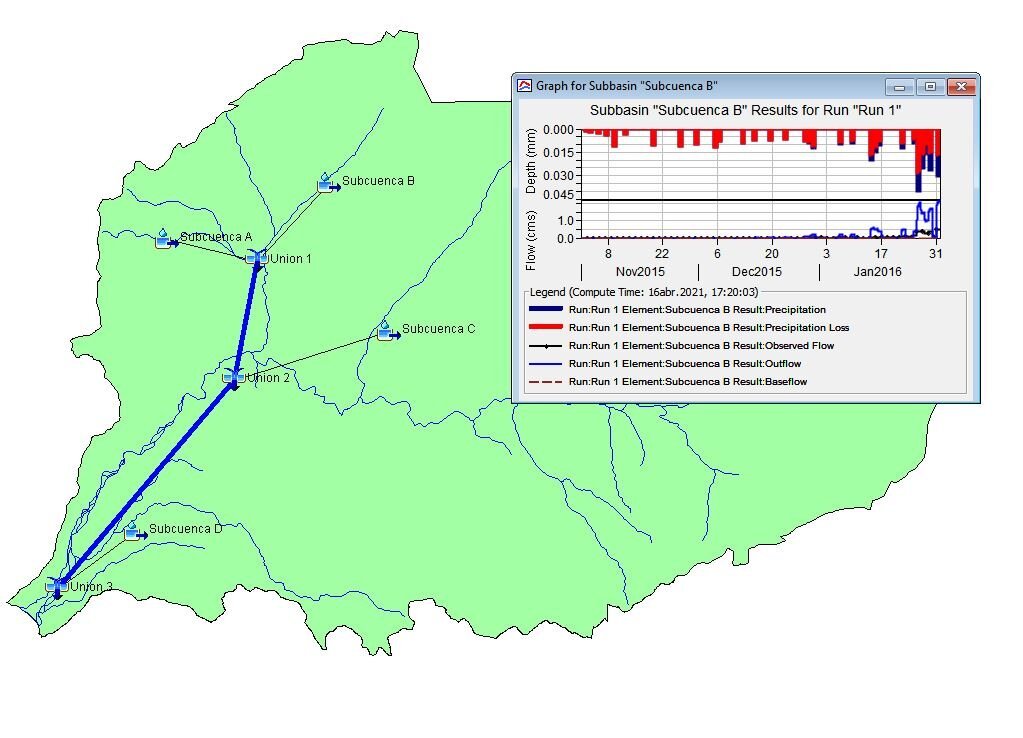The Hydrologic Modeling System (HEC-HMS) is a free program developed by the US Corps of Engineers that implements a series of hydrological methods to represent different physical processes of the water cycle.
HEC-HMS also includes procedures necessary for continuous simulation including evapotranspiration, infiltration, hydrological routing and soil moisture accounting. The tools and options of HEC HMS make it a very versatile and powerful software for the hydrological simulation of different scenarios such as extreme events in arid regions, or water balances in wet climates.
Hatarilabs offers the online course of Hydrological Modeling with HEC-HMS for students and professionals of any country. The course is focused on theory and practical to know the different HEC-HMS tools and its application to the hydrological modeling.
Objectives
At the end of the course, the student will have the abilities to:
Know the HEC HMS environment.
Learn concepts about the water cycle, precipitation-runoff processes and water balance.
Understand the mechanism of the HEC-HMS tools.
Simulate hydrological models in watersheds.
Course content
The sessions consist of a theoretical and practical part. The development of the theory and applications of this course is shown below grouped by session:
Session 1
Theoretical Part
Water cycle
Practical part
Installation HEC HMS 4.8.
Introduction to HEC HMS 4.8
An overview of the HEC HMS model.
Construction of a basic hydrological model.
Analysis of the hydrological components of the watershed and simulation of the model.
Session 2
Theoretical Part
Watershed modeling.
Practical part
Creation of a model of the basin divided on two sub-basins (high and low part).
Input of observed data from a gauging point.
Setting up and simulation the hydrologic response of 8 hour storms over a 20 hour period.
Optimization of hydrological parameters.
Analysis of maximum flow rates and flow development over time.
Session 3
Theoretical Part
Runoff generation from precipitation
Practical part
Construction the hydrological model divided on 3 sub-basins.
Setting up data for the Loss, Transform and Baseflow methods.
Specifying hyetograph of each sub-basins.
Daily simulation of the hydrological model.
Flow analysis in the upper part of the watershed.
Session 4
Theoretical Part
Hydrological routing in HEC-HMS
Practical part
Creation of a basin model with 3 sub-basins.
Setting up the Muskingum routing method.
Insertion of meteorologic model according to the temporal distribution precipitation with gage weight tools.
Calculation of hydrographs associated with a return period in a basin. The flow of avenues is defined for a return period of 100 and 500 years.
Analysis of flow for return periods of 100 and 500 years.
Session 05
Practical part
Creation of a base flow hydrological model in a micro-basin with the HEC-HMS software
Setting up Loss method as Soil Moisture Accounting according to physical properties: Field capacity, wilting point and the infiltration speed.
Implementation the parameters Clark Unit Hydrograph: Time of Concentration and Storage Coefficient.
Analysis graphical results
Creation a hydrological model with a reservoir.
Insertion data type like Storage-Discharge Functions.
Insertion temporal rainfall information
Analysis flow and storage results of reservoir
Session 06
Practical part
Creation of the hydrological model in a sub-basin differentiating the main tributaries.
Setting up data for Loss, Transform and Baseflow methods.
Insertion data observed flow of each hydrological element.
Implementation of an optimization trial to estimate parameters: SCS Unit Hydrograph - Lag Time and SCS Curve Number - Initial Abstraction.
Visualization observed vs. simulated flow.
Register
This course is free in our new e-commerce site till Nov 1, 2023:
For certification option please write to saulmontoya@hatarilabs.com.























